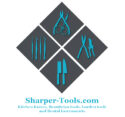1. **Purpose**: What will the knife be used for? Cooking, camping, hunting, or a specific culinary task? Different knives are designed for different purposes.
2. **Blade Material**: High-quality steel, like stainless or carbon, is often preferred for its durability, sharpness, and resistance to corrosion.
3. **Blade Type**: Choices include chef’s knives, paring knives, serrated knives, etc., each suited to different tasks.
4. **Handle Comfort**: Ergonomics matter for comfortable and safe handling, especially during extended use.
5. **Size**: The length of the blade should match the intended use. A smaller knife offers precision, while a larger one may provide more cutting power.
6. **Balance**: A well-balanced knife is easier to control, reducing fatigue during use.
7. **Maintenance**: Consider ease of sharpening and whether the knife is dishwasher-safe.
8. **Brand and Reputation**: Trustworthy brands often provide reliable quality and craftsmanship.
9. **Budget**: Price range can be a significant factor, as high-quality knives can be an investment.
10. **Aesthetics**: Some may consider the knife’s appearance, especially if it’s intended for presentation or display.
11. **Reviews and Recommendations**: Checking reviews and seeking advice from knowledgeable sources can help in making an informed decision.
Remember, personal preference plays a crucial role, so it’s essential to choose a knife that feels right for the individual’s needs and preferences.

